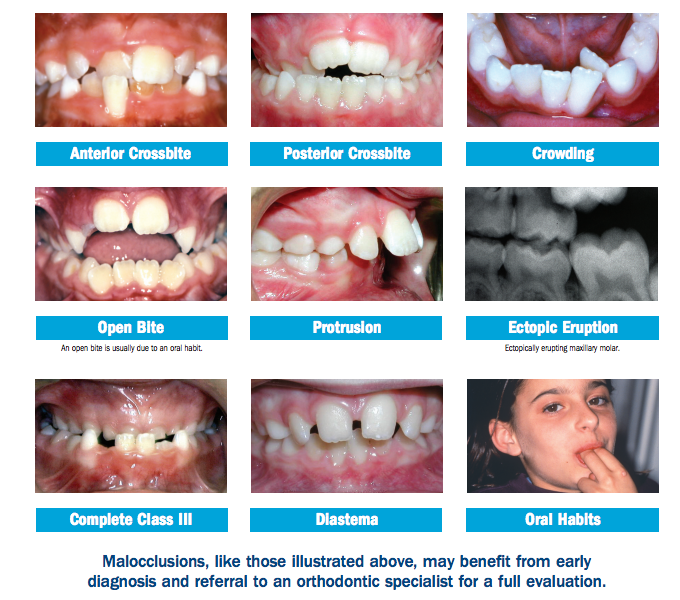The Single Strategy To Use For Causey Orthodontics
Table of ContentsThe 7-Second Trick For Causey OrthodonticsCausey Orthodontics Can Be Fun For AnyoneThe Greatest Guide To Causey OrthodonticsSome Known Facts About Causey Orthodontics.See This Report on Causey Orthodontics
Disregarding occlusal relationships, it was typical to eliminate teeth for a selection of oral issues, such as malalignment or overcrowding. The idea of an undamaged teeth was not widely appreciated in those days, making bite connections appear irrelevant. In the late 1800s, the concept of occlusion was essential for creating reputable prosthetic substitute teeth.As these concepts of prosthetic occlusion progressed, it became an indispensable tool for dental care. It was in 1890 that the job and effect of Dr. Edwards H. Angle began to be felt, with his contribution to contemporary orthodontics particularly noteworthy. At first concentrated on prosthodontics, he instructed in Pennsylvania and Minnesota before guiding his interest in the direction of oral occlusion and the therapies required to keep it as a typical problem, thus coming to be referred to as the "dad of modern-day orthodontics".

The idea of perfect occlusion, as proposed by Angle and integrated into a category system, enabled a change in the direction of dealing with malocclusion, which is any kind of discrepancy from regular occlusion. Having a full collection of teeth on both arches was extremely demanded in orthodontic treatment because of the need for precise relationships in between them.
The Ultimate Guide To Causey Orthodontics
As occlusion came to be the vital top priority, facial proportions and appearances were disregarded - Causey Orthodontics. To accomplish suitable occlusals without using outside forces, Angle proposed that having perfect occlusion was the very best means to acquire maximum facial aesthetics. With the death of time, it ended up being quite noticeable that even an exceptional occlusion was not appropriate when taken into consideration from an aesthetic point of sight
Charles Tweed in America and Raymond Begg in Australia (who both examined under Angle) re-introduced dentistry removal into orthodontics throughout the 1940s and 1950s so they can boost facial esthetics while also guaranteeing better stability worrying occlusal relationships. In the postwar duration, cephalometric radiography begun to be made use of by orthodontists for gauging changes in tooth and jaw placement triggered by growth and therapy. It became obvious that orthodontic therapy might adjust mandibular advancement, resulting in the formation of useful jaw orthopedics in Europe and extraoral force actions in the US. These days, both practical devices and extraoral devices are applied around the world with the purpose of modifying development patterns and kinds. Consequently, pursuing real, or at the very least improved, jaw connections had actually ended up being the primary objective of therapy by the mid-20th century.
More About Causey Orthodontics
 Up until the mid-1970s, braces were made by wrapping steel around each tooth. http://localstorefronts.com/directory/listingdisplay.aspx?lid=72531., it ended up being feasible to rather bond metal braces to the teeth.
Up until the mid-1970s, braces were made by wrapping steel around each tooth. http://localstorefronts.com/directory/listingdisplay.aspx?lid=72531., it ended up being feasible to rather bond metal braces to the teeth.Andrews offered an insightful meaning of the excellent occlusion in long-term teeth. This has actually had meaningful effects on orthodontic treatments that are provided routinely, and these are: 1. Correct interarchal partnerships 2. Appropriate crown angulation (suggestion) 3. Correct crown inclination (torque) 4. No turnings 5. Tight call factors 6. Apartment Contour of Spee (0.02.5 mm), and based upon these principles, he found a therapy system called the straight-wire appliance system, or the pre-adjusted edgewise system.
The advantage of the style exists in its bracket and archwire mix, which calls for just very little cable flexing from the orthodontist or medical professional (cheapest orthodontist near me). It's appropriately called after this feature: the angle of the port and density of the brace base eventually figure out where each tooth is situated with little demand for additional control
The 6-Minute Rule for Causey Orthodontics
Both of these systems employed the same braces for every tooth and demanded the flexing of an archwire in 3 aircrafts for locating teeth in their preferred placements, with these bends determining utmost positionings. When it involves orthodontic appliances, they are divided right into two types: detachable and fixed. Detachable appliances can be handled and off by the client as called for.

Therefore, mostly all modern-day fixed home appliances can be thought about variations on this edgewise home appliance system. Early 20th-century orthodontist Edward Angle made a significant payment to the globe of dental care. He produced four distinctive device systems that have actually been made use of as the basis for numerous orthodontic treatments today, barring a couple of exemptions.
Some Known Questions About Causey Orthodontics.

The cable ended in a string, and to move it ahead, a flexible nut was made use of, which allowed for a rise in circumference. By ligation, each specific tooth was affixed to this expansive archwire (affordable orthodontist near me). As a result of its limited series of motion, Angle was not able to attain specific tooth placing with an E-arch
These tubes held a firm pin, which could be repositioned at each visit in order to relocate them in position. Referred to as the "bone-growing appliance", this gizmo was theorized to urge much healthier bone development because of its possibility for moving force straight to the origins. Nonetheless, executing it verified problematic in truth.